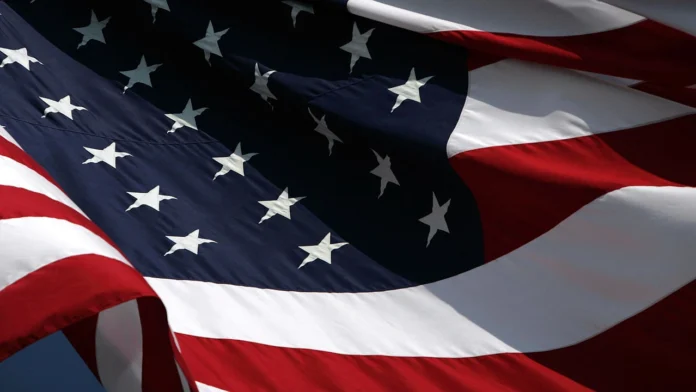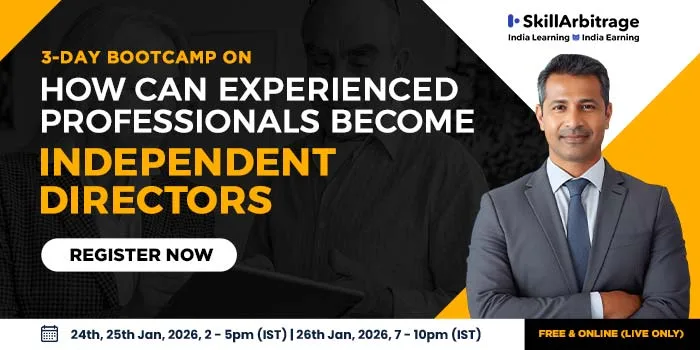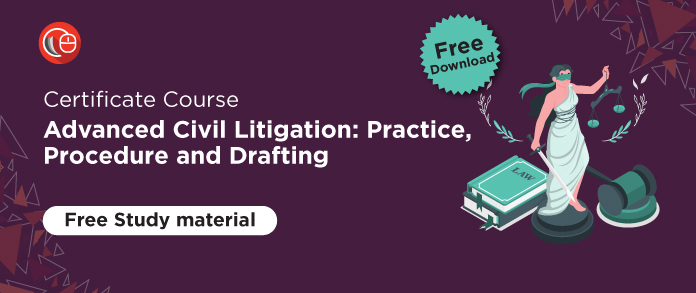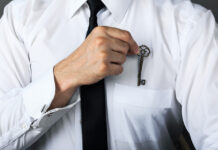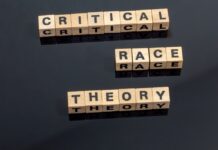The article is written by Tejaswini Kaushal, a student at Dr. Ram Manohar Lohiya National Law University, Lucknow. This article seeks to elucidate the objectives and features of the 1st Amendment in the U.S. Constitution as well as the rights bestowed by the amendment on American citizens.
it has been published by Rachit Garg.
Introduction
“Congress shall make no law respecting an establishment of religion, or prohibiting the free exercise thereof; or abridging the freedom of speech, or of the press; or the right of the people peaceably to assemble, and to petition the Government for a redress of grievances.”
-The First Amendment, U.S. Constitution
These rights guaranteed by the 1st amendment of the American Constitution are critical and give America its liberal status. The First Amendment of the U.S. Constitution forbids the government from enacting laws that restrict the free exercise of religion, control the foundation of religion, or restrict speech, freedom of the press, assembly rights, or the right to petition the government for redressal of grievances. It became one of the ten amendments that make up the Bill of Rights on December 15, 1791. To appease Anti-Federalist resistance to the Constitution’s adoption, the Bill of Rights was drafted. Many of the First Amendment’s clauses were first read more strictly than they are now since they initially only applied to laws passed by Congress.
History of the First Amendment
The Magna Carta of 1215 and the English Bill of Rights of 1689 both contained the notion that people have the right to petition for the redress of grievances. The Virginia colonial assembly enacted a Declaration of Rights in 1776 which said that the freedom of the press is one of the greatest bulwarks of liberty and that it can never be restricted other than by dictatorial governments. Similar commitments were made by eight of the other twelve states. However, rather than acting as binding rules, these pronouncements were typically regarded as mere proscriptions to state legislators, having no real teeth.
On September 17, 1787, a Constitutional Convention in Philadelphia presented a new Constitution that included a stronger chief executive, among other improvements, after many years of relatively weak governance under the Articles of Confederation. A Bill of Rights identifying and safeguarding civil liberties was a suggestion made by George Mason, a delegate to the Constitutional Convention and the author of Virginia’s Declaration of Rights.
Other delegates, such as James Madison, who would later draft the Bill of Rights, disagreed, contending that the present operating state guarantees that civil liberties are adequate and that any attempt to enumerate specific individual rights ran the risk of implying that other, unnamed rights were not protected. Mason’s suggestion was rejected after a brief discussion by a unanimous vote of the state delegates.
However, for the Constitution to be approved, state conventions in nine out of thirteen states had to agree. The Constitution’s inadequate protections for civil liberties were a contributing factor in the ‘anti-federalist’ movement’s opposition to ratification. Supporters of the Constitution successfully suggested to their state conventions that they ratify the Constitution and demand the addition of a Bill of Rights in states where there was widespread opposition to its ratification. All thirteen states finally approved the U.S. Constitution. Following a request from the state legislatures, James Madison suggested twenty constitutional changes in the first United States Congress. He also consented to pen the First Amendment, the Second Amendment’s right to bear arms, and the due process protections in this Bill of Rights. Congress significantly streamlined this text, which went through both the House and the Senate with little recorded debate and has made it more difficult to analyze the object and intent of the Amendment in the future.
On September 25, 1789, Congress passed twelve articles of amendment and sent them to the states for ratification. The remaining ten of the twelve proposed articles were approved by the required number of states on December 15, 1791, and are now collectively known as the Bill of Rights, with the altered wording of the third article becoming the First Amendment.
Features of the First Amendment
The following are the key features of the First Amendment of the U.S. Constitution:
- Speech, press, religion, assembly, and the right to petition are among the five freedoms the First Amendment defends. The citizens of the United States of America are some of the most liberated people in the world because of these five fundamental liberties.
- A person does not have to be of a certain ‘legal age’ in order to use the rights promised under the First Amendment of the U.S. Constitution. On the day of a person’s birth, these rights are assured to him. The primary condition for exercising First Amendment rights and privileges is not citizenship. All persons, U.S. citizens or not, have the right to freedom of expression, of the press, of the assembly, and of petitioning in the United States.
- The Founders of the American Democratic Republic insisted that these liberties be safeguarded by an amendment to the initial Constitution of the U.S. before they were willing to adopt the Constitution.
- The First Amendment is neither left nor right-wing aligned. It can be employed to promote or resist social and political change. People of all political ideologies are entitled to exercise their rights under the First Amendment.
- As long as there is no disturbance to school operations, students are free to pray at public schools in the United States despite the state’s reluctance to promote the right to religion in public places.
- The First Amendment safeguards the people against restrictions placed by the government on their right to free speech, but it does not preclude a private company from establishing its own standards.
- According to the First Amendment, the government cannot forbid a person from hearing or reading other people’s speech or force him to say anything he doesn’t want to. Even if a person never utilizes their right to speech, they still have the right to receive information.
Right to religion
The right of all individuals to believe, speak, and act, individually and in community with others, in private and in public, in accordance with their view of ultimate truth, refers to religious freedom. The fact that the first right recognized in the Bill of Rights is freedom of religion suggests that the American founders recognized the significance of religion for societal, political, and human well-being.
The ‘establishment clause’ and ‘free exercise clause’ of the First Amendment, which together define the religious liberty clauses of the First Amendment, safeguard freedom of religion. The first article forbids any ‘establishment of religion’ by the government, while the second forbids any interference with ‘the free practice thereof’ by the government.
The Constitution forbids Congress from supporting, promoting, or getting too engaged in religion as per the establishment clause. The free exercise clause, on the other hand, provides Americans with the right to follow their religion. Sometimes, both clauses are in conflict with one another.
Landmark cases
Reynolds v. United States (1878)
The Supreme Court ruled in Reynolds v. United States (1878) that Congress was stripped of any legislative authority over religious opinions only by the First Amendment, but was allowed to address such behaviours that flouted civic obligations or undermined public order. The Supreme Court’s first usage of the concept ‘a wall of separation between the church and the state’ was in this case.
Murdock v. Pennsylvania (1943)
The Supreme Court ruled in Murdock v. Pennsylvania (1943) that freedom of expression, freedom of the press, and freedom of religion are in a favoured position.
Zorach v. Clauson (1952)
The U.S. Supreme Court said in Zorach v. Clauson (1952) that the government was not permitted to support religious organizations, carry out religious teaching, combine secular and sectarian education, or employ secular institutions to compel anybody to practice one or more religions.
Torcaso v. Watkins (1961)
The Supreme Court concluded in Torcaso v. Watkins (1961) that the Constitution forbids states and the federal government from putting any sort of religious test on candidates for public office. In the same case, the Supreme Court made it abundantly clear that state and federal governments are not permitted to enact regulations or laws that favour one religion over another, believers over non-believers, or religions based on the belief in the existence of God over religions based on other beliefs.
Abington School District v. Schempp (1963)
The Supreme Court held that the primary justification for the establishment clause is to avoid a merger of political and religious activities, as expressed in Abington School District v. Schempp (1963). Because it aims to prohibit both political control over religion and religious control over politics, the Establishment Clause serves as double security.
Epperson v. Arkansas (1968)
Congregational neutrality is the fundamental idea behind the Establishment Clause. The Supreme Court laid forth the wide rule of denominational neutrality required by the First Amendment in Epperson v. Arkansas (1968) and asserted that it may not be antagonistic to any religion or to those who support atheism, and it may not support, encourage, or advance one religion against another.
Walz v. Tax Commission of the City of New York (1970)
It is against the law for both the Federal Government of the United States and the state governments to establish or sponsor religion because, as the Supreme Court noted in Walz v. Tax Commission of the City of New York (1970), the establishment of religion traditionally suggested patronage, economic assistance, and direct participation of the sovereign in religious activity.
Gillette v. the United States (1970)
According to the Supreme Court in Gillette v. United States (1970), the Establishment Clause works to guarantee that laws are secular in intent, fair and balanced in administration, and neutral in their principal impact.
Larkin v. Grendel’s Den, Inc. (1982)
In the 1982 decision of Larkin v. Grendel’s Den, Inc., the US Supreme Court addressed the issue of non-government organizations enforcing alcohol regulations. Any church or school within 500 feet of a business applying for a liquor license may object under legislation that was created in Massachusetts. In an 8-1 ruling, the Supreme Court found that Massachusetts’ statute violated the Establishment Clause because it granted non-governmental institutions authority often held by the government and allowed decisions to be taken along religious lines, thus furthering religious objectives.
Larson v. Valente (1982)
The Supreme Court ruled in Larson v. Valente (1982) that the Establishment Clause is the most explicit prohibition against the public preference of one religious group over another.
Kiryas Joel Village School District v. Grumet (1994)
According to the Court’s ruling in Board of Education of Kiryas Joel Village School District v. Grumet (1994), the government should not favor one religion over another or religion over atheism.
McCreary County v. American Civil Liberties Union of Kentucky (2005)
The Supreme Court in McCreary County v. American Civil Liberties Union of Kentucky (2005) addressed the conflict between the state’s involvement and refusal to be involved in religious activities using an illustration, saying that if the government cannot afford military chaplains, many soldiers and sailors will be denied the chance to practice their preferred religions. When the government spends money on the clergy, it appears as though it is establishing religion. It held that the establishment clause’s core principle of official religious neutrality is violated when the government acts with the overt and predominant goal of advancing religion. This is because there can be no neutrality when the government is ostensibly trying to take a position.
The two ideologies
Separationists
The separationist ideology believes that there exists a wall between religion and the state. This concept has been long established in Supreme Court rulings, starting with Reynolds v. United States (1878). The Everson v. the Board of Education (1947) decision, which allowed New Jersey school boards to cover transportation costs to private schools, marked the beginning of the court’s employment of several standards to decide whether the wall between the two worlds had been broken.
The Lemon test in Lemon v. Kurtzman (1971) was formulated so as to determine when the wall should be breached by the state, which stated that action met the following criteria to be considered an establishment:
- The law does not have a secular goal,
- Has promoted or hampered religion as its main or major consequence, or
- Has encouraged excessive government involvement in religion.
Justices and legal experts have questioned the Lemon test, yet it continues to be the major method used by the Court to uphold the Establishment Clause. The Court has acknowledged in Lemon and reaffirmed in various judgments that there could never be a complete separation of religion and state. Government and religious institutions will inevitably interact in some way. It acknowledges that the line of separation is not a ‘wall’, but rather a hazy, illegible barrier that varies based on the specific situation.
Accommodationists
The accommodationists, as a group, counter the separationists by saying that they are religious people whose institutions assume a ‘supreme being’. Furthermore, it was held by various judgments that there is really no such thing as a perfect or absolute separation. The very existence of religion causes the involvement of politics in religion. Accommodationists argue that the Lemon test should only be used in certain circumstances. Because of this, many conservatives believe that the Formation Clause only prohibits the establishment of a state church and not the promotion of broad religious views that do not favor any specific sect and are in line with the objectives of the secular government. The Supreme Court noted in Lynch v. Donnelly (1984) that while the idea of a ‘wall’ of separation between religion and state is a helpful metaphor, it does not accurately capture the practical facets of the connection that really exists. The Constitution outlaws animosity against any religion and actively demands accommodation, not just tolerance, of all religions. However, it does not necessitate the full separation of church and state.
Limitations to the free exercise of freedom of religion
The fact that the first right recognized in the Bill of Rights is freedom of religion suggests that the American founders recognized the significance of religion for societal, political, and human well-being. It is obvious from the First Amendment that it aimed to safeguard ‘the free practice’ of religion, or what is sometimes referred to as ‘free exercise equality’. The freedom to preach, hold, practice, and alter one’s views at will in accordance with one’s conscience is known as free exercise. The Free Exercise Clause forbids, within reasonable bounds, governmental interference with religious belief and practice. The section prohibits the imposition of any restrictions on the free exercise of religion by state or federal legislators. Its goal is to protect each person’s right to exercise their religion freely by outlawing any government intrusions.
The Free Exercise Clause provides a second layer of defence since it serves as a barrier against both direct and indirect state pressure, as well as blatant restrictions on the free exercise of religion. Yet, certain restrictions are present on this right:
The Supreme Court determined in Reynolds v. the United States (1878) that while laws cannot impose their will on people’s religious beliefs and ideas, they can control some religious activities, such as human sacrifice. According to the Court, to rule otherwise would effectively allow each person to become their own lawmaker and elevate declared religious ideas above the rule of law. The government would only exist in name in such a situation. Even if a law’s burden is merely considered indirect, it is unconstitutional if its intent or effect is to prevent the practice of any religion, or if it discriminates unfairly between different religions.
Furthermore, the Supreme Court ruled in Cantwell v. Connecticut (1940) that the Free Exercise Clause of the Fourteenth Amendment applied to the states under the Due Process Clause of the same amendment. The freedom to practice one’s religion is unalienable, but the right to do so is not. All people and all religions have the fundamental right to religious freedom, which guarantees their ability to practice their religion freely and equally with others. It is appropriately viewed as a capricious right, that is, one that is universal, broad, and deep but not absolute, because it is vital to both the creation of the United States and the structuring of human society.
Right to speech
The rights to free speech and free press are broadly protected under the First Amendment. Free speech refers to the unrestricted, open exchange of ideas without censorship or intervention from the executive branch. The First Amendment’s definition of ‘freedom of expression’ includes both the choice of what to say and what not to say. The right to freedom of the press is also encapsulated under this head. The term ‘free press’ refers to the freedom for people to publish and disseminate information, ideas, and opinions without intervention from the government or fear of repercussions.
Landmark cases
New York Times Co. v. Sullivan (1964)
The Supreme Court stated that the First Amendment’s core commitment is that, as laid down in New York Times Co. v. Sullivan (1964), the debate on public policy issues should be unfettered, robust, and open. The Court reaffirmed that the United States Supreme Court described the freedoms of speech and the press as essential personal liberties and underlined that the exercise of these freedoms is the cornerstone of a free society and a free government.
Bond v. Floyd (1966)
This case involved the constitutional shield around the speech of elected officials. The Court went on to say that, in the same way, that false claims must be protected in order for freedom of expression to have the breathing room it needs to thrive, so too must remarks that criticize government policy and how it is carried out be protected.
Griswold v. Connecticut (1965)
In Griswold v. Connecticut (1965), the phrase “the freedom of the entire university community” was used to refer to the peripheral rights, which also include freedom of association, including privacy in one’s associations, as well as the right to disseminate, obtain, and read materials, as well as the freedoms of inquiry, thought, and teaching. Several ancillary rights that are linked to the fundamental freedoms of expression and the press were seen to strengthen the security of these fundamental liberties.
Stanley v. Georgia (1969)
The Supreme Court held in Stanley v. Georgia (1969) that the freedom to acquire thoughts, information, and opinions, regardless of their social value, and to be independent of governmental invasions into one’s privacy and control over one’s thinking are both protected by the United States Constitution. The Court further stated that a community cannot censor or tax the expression of beliefs just because they are unpopular, inconvenient, or objectionable. According to the Court, doing so would be an outright rejection of the Bill of Rights’ guiding principles.
Limitations to free speech
The right to speech is not an unrestricted or absolute right. In fact, US law recognizes a number of significant limitations on it. The United States Constitution guarantees free speech while enabling restrictions on specific types of expression, according to the Supreme Court of the United States. Child pornography, obscenity, fraud, harassment, encouragement of impending unlawful behavior, actual threats, and commercial communication such as copyright, advertising, or patent rights are some examples of the restrictions imposed.
Incitement
Over the years, the Supreme Court has ruled that support for the use of force is not shielded when it is intended to stir up potential illegal activity or generate it, or is likely to do so.
- In Schenck v. United States (1919), Justice Oliver Wendell Holmes Jr. noted that where the words are utilized in such instances and are of such a nature as to create an imminent and grave danger that they will lead to such wrongdoings, Congress must strive to prevent it. Therefore in such cases, incitement is to be determined by the “clear and present danger” standard.
- In Brandenburg v. Ohio (1969), the Supreme Court unanimously overturned the conviction of a Ku Klux Klan group (an American terror organization pursuing a white supremacist agenda in light of the American Civil Rights Movement) for advocating violence as a means of achieving political reform since their assertions at a rally did not convey an urgent or imminent probability of indulgence in violent activity. This standard was, therefore, narrowed to an “imminent lawless action” standard.
- In the case of Commonwealth v. Carter (2019), a juvenile court in Massachusetts convicted a 20-year-old woman, who was 17 at the moment of the conduct, of manslaughter in 2017 after ruling that persistently inciting someone to commit suicide was not guaranteed by the First Amendment. The defendant’s involuntary manslaughter conviction was upheld when the Massachusetts Supreme Judicial Court concluded on February 6, 2019, that she had criminal intent when she committed the crime. In January 2020, the United States Supreme Court refused to consider the case, upholding the Massachusetts Supreme Court’s judgment.
False statement of fact
There is no constitutional significance in false claims of truth, the Supreme Court has opined in several judgments. The Court has also debated how much of the expression and speech of an individual can be jeopardized so as to punish a false statement. Therefore, this is not a set rule. For establishing which kinds of misleading claims are not protected, the Supreme Court has devised a complicated structure. The Court has been clear that there are four such categories:
- There may be civil or criminal penalties for making false representations of fact when in a ‘sufficiently guilty mental state’.
- It’s occasionally illegal to deliberately state a false fact. This includes laws governing libel and slander.
- In some cases, recklessly misleading assertions of fact may result in legal liability.
- This exemption can also apply to some implicit assertions of fact that have a ‘false factual connotation’.
- Some blatantly incorrect remarks could be fully exempted from the penalty.
Some important cases in this regard are:
- In the famous case New York Times v. Sullivan (1964), the Supreme Court ruled that falsehoods about the government may be totally protected. This category is not totally obvious, though, because it is still debatable whether fraudulent historical or medical claims are protected.
- In Riley v. National Federation of the Blind of North Carolina (1988), the Supreme Court ruled that telemarketers’ fundraising fees could not be limited and that licensing requirements were unconstitutional because they were not specifically tailored enough to withstand First Amendment analysis.
- The Supreme Court of Illinois, in the case of Illinois ex rel. Madigan v. Telemarketing Assoc., Inc. (2002), upheld an Illinois telemarketing anti-fraud law against assertions that it was an example of prior restraint, stating that consumer protection against misrepresentation was a legitimate government involvement justifying a free speech exception for false claims made in that situation.
Counterfeiting currency
Laws prohibiting counterfeit US cash, including certain creative and photographic reproductions that couldn’t possibly pass for genuine money, have always been enforced.
Obscenity
The Miller test, which derives its name from Miller v. California (1973), states that speech is not protected if the ordinary citizen, using modern community standards, would conclude that the work, taken as a whole, appeals to sexually deviant interests, the work portrays or discusses sexual conduct or excretory functions in a patently offensive manner, and the work, taken as a whole, lacks significant artistic, literary, political, scientific, or scholarly merit.
The Court had ruled that someone may only be penalized if they know what they did wrong. The Court further ruled that an individual may only be penalized if he is aware of the material’s genuine contents. The Supreme Court, therefore, provided a defense of “reasonable ignorance” to an obscenity allegation in Smith v. California (1959). This exemption is justified by the fact that judges have held that obscenities frequently have a demoralizing and demeaning effect that encourages antisocial behavior. Furthermore, private possession of pornographic material is allowed in the U.S.
Child pornography
There are a few ways in which the exemption for child pornography differs from the exception for obscenity:
- The exceptions to the rule are considerably more narrowly defined.
- Whether or not any portion of the speech satisfies the Miller test is not of concern. If it falls under the child pornography exception at all, it loses its protection. The law states that communication is not shielded if it visually depicts minors engaging in sexual activity or lewdly displaying their genitalia.
- Private ownership of child pornography may be prohibited, in contrast to the laws governing ordinary obscenity. This exception is quite specific, but it is also very constrained. It does not apply to pornography that encourages viewers to harm children or pornography that individuals believe is harmful when presented to minors.
Fighting words
This exception originated in Chaplinsky v. New Hampshire (1942). The Supreme Court ruled that speech that contains “fighting language” is not protected. Fighting words, according to the Court, are phrases that “tend to incite an instant breach of the peace” by starting a fight, provided that they are personally offensive terms that are known to be fundamentally prone to causing violence when used in conversation with regular people. Such communication must also be addressed directly to the listener in order to avoid being seen as an insult.
In general, ‘true threats of violence’ that are made with the intention of putting the victim in danger of suffering physical harm or death are not protected. Nonetheless, there are a few exceptions, namely:
- Threats that would be a clear exaggeration to a reasonable person are not punishable.
- The Constitution protects against threats of ‘politically motivated boycotts’ and ‘social exclusion’.
Threats made against the U.S. President
According to Title 18, Section 871 of the United States Code, it is forbidden to knowingly and willingly threaten the President of the United States with death, kidnapping, or physical damage. This likewise holds true for any Vice President-elect, Vice President, or any other official who comes after them in the line of succession to the presidency. Because the threatener does not have to really be able to carry out the threat in order for charges to be brought under this legislation, it differs from other genuine threat laws in which convicts may also be charged.
Speech owned through IPR
Due to the concept of intellectual property rights, speech limitations fall under another category that makes such speech illegal. Trademarks and copyrights come under this exemption to free speech. If some content is protected as intellectual property, the public expression of it is restricted. In Harper & Row v. Nation Enterprises (1985), the Supreme Court made this ruling for the first time, upholding copyright law in the face of a First Amendment free expression argument.
Commercial speech
The exemption to the free speech rule for commercial speech is distinctive. Advocates for the law acknowledge that it has diminished protection despite the fact that there is no absolute exemption. An example of this could be the case of J.C. Penney Corporation v. Cynthia Spann (2016). In this case, Cynthia Spann’s claim that J.C. Penney was employing deceptive advertising to boost sales was the catalyst for this lawsuit. The legal battle was ultimately won by Cynthia Spann.
Restrictions based on the special capacity of the government
The government may legally restrict the free speech of citizens in special capacities. These include the following:
- Employer,
- Educator,
- Regulator of the airwaves,
- Subsidizer or speaker,
- Controller of the military,
- Regulator of the Bar, and
- Prison warden.
Right to press
One of the most significant constitutional protections is freedom of the press. It establishes the free press as a watchdog for the government, at least in theory, shielding it from governmental control. Except for radio and television wireless transmission, which historically had weaker constitutional safeguards, the free speech and free press sections have been regarded as offering speakers the same protection as authors. The Free Press Clause safeguards people’s freedom to express themselves via the publication and dissemination of information, ideas, and opinions free from governmental intervention, restraint, or retribution. Media such as newspapers, magazines, plays, films, and video games are now covered under this right. Although it is debatable whether those who blog or use social media as journalists really do deserve protection under media shield laws, they are all equally protected under the Free Speech and Free Press Clauses because neither clause makes a distinction between media organizations and amateur speakers. This is further demonstrated by the Supreme Court’s persistent refusal to acknowledge that the institutional media are bestowed greater protection under the First Amendment than other speakers.
Landmark cases
Near v. Minnesota (1931)
In the case of Near v. Minnesota (1931), the Supreme Court rejected previously enforced restraint of pre-publication censorship. It was a key judgment for press freedom regarding pre-publication censorship. Here, the Minnesota legislature created a law enabling courts to halt the publication of scandalous, and defamatory magazines, permitting a defense of the truth only in situations where the truth has been revealed with bona fide intentions and objectives. The Free Press Clause was, therefore, extended by the Court to the states, and the Act was rejected as being unconstitutional.
Grosjean v. American Press Co. (1936)
In Grosjean v. American Press Co. (1936), the Supreme Court ruled that a state tax on newspaper advertising receipts was unconstitutional, citing the press’ crucial function in forming “informed public opinion“. In a similar vein, several levies that benefited the media have been overturned.
Lovell v. City of Griffin (1938)
Chief Justice Charles Evans Hughes defined ‘press’ as “any type of publication which furnishes a vehicle of information and opinion” in Lovell v. City of Griffin (1938). This privilege has been increased.
Mills v. Alabama (1966)
The Supreme Court outlined the goal of the free press provision in Mills v. Alabama (1966). In this case, the U.S. Supreme Court overturned the Alabama Supreme Court and came to the conclusion that the First Amendment was violated by a state statute that made an editorial in a newspaper on election day criminally liable.
New York Times Co. v. United States (1971)
In this case, the Nixon administration sought to prevent the release of the Pentagon Papers, a secretly copied collection of top-secret government records about the Vietnam War. The Nixon administration failed to satisfy the strict burden of proof needed for prior restraint, according to the Court. In a concurring opinion, Justice Brennan cited the Near v. Minnesota case and stated that “only governmental allegation and proof that publication must inevitably, directly, and immediately cause the occurrence of an event kindred to imperiling the safety of a transport already at sea can support even the issuance of an interim restraining order“.
Branzburg v. Hayes (1972)
In Branzburg v. Hayes (1972), the right of free press was referred to as ‘a basic personal right’ that included pamphlets and leaflets in addition to newspapers and journals. The Supreme Court concluded that a journalist’s ability to reject a subpoena from a grand jury was not protected by the First Amendment. The Supreme Court opined on the principle of ‘reporters’ privilege’.
Miami Herald Publishing Co. v. Tornillo (1974)
State legislation mandating publications to disclose the comments of political candidates to criticism was unanimously overturned by the Court in Miami Herald Publishing Co. v. Tornillo (1974). The law, according to the state, was established to ensure responsible journalism. The Supreme Court concluded that the government cannot order newspapers to publish something that they do not want to print because it determined that the First Amendment guarantees freedom but not accountability.
Federal Communications Commission v. Pacifica Foundation (1978)
The Federal Communications Commission’s right to limit the use of ‘indecent’ content in broadcasting was maintained by the Supreme Court in Federal Communications Commission v. Pacifica Foundation (1978). This is one of the decisions where the Supreme Court has upheld content-based television and radio regulation in a number of decisions. The government issues licenses to various businesses so they can use the constrained number of frequencies available for non-cable television and radio stations. Broadcasters may be subject to government restrictions, but only on a content-neutral basis.
Arkansas Writers’ Project v. Ragland (1987)
In Arkansas Writers’ Project v. Ragland (1987), the Court struck down an Arkansas legislation that exempted “religious, professional, commercial, and sports magazines” from taxes because it effectively regulated the content of newspapers.
Leathers v. Medlock (1991)
The Supreme Court determined in Leathers v. Medlock (1991) that governments may treat various media outlets differently, for example, by charging fees for broadcasting content from cable television but not newspapers.
Right to assembly and petition
Even though the fundamental liberties protected by the First Amendment are widely known, the freedoms of assembly and petition are among the least well-known. But these protections are a crucial pillar of the democratic system that rules the nation. The history of the United States would probably not be what it is now without the freedom to petition the government and demonstrate.
The United States government normally cannot forbid individuals from congregating and/or demonstrating due to the freedom of assembly. The freedom to protest is a constitutional right that may be subject to some limitations. The right “to petition the government for a redress of grievances” is protected under the Petition Clause. The right has grown over time. It is no longer limited to requests for ‘a redress of grievances’ in any meaningful sense of the phrase, but also includes requests that the government exercises its authority to further the interests and prosperity of the petitioners and to represent their opinions on politically sensitive issues. Therefore, the right to speak with government representatives, lobby them, and file formal petitions in court are all included in the right to petition the government for a redress of grievances.
Landmark cases
California Motor Transport Co. v. Trucking Unlimited (1972)
The Supreme Court stated that the right to petition includes the approach of people or groups of them to administrative authorities and courts, the third part of the government, in California Motor Transport Co. v. Trucking Unlimited (1972). Certainly, all governmental agencies are subject to the right to petition. The right of petition includes many different aspects, including the right of access to the courts. Thus, this privilege is now extended to the states via incorporation and includes petitions to all three federal governmental branches. The Supreme Court has ruled that the term ‘redress of grievances’ should be interpreted widely, including petitions on behalf of business interests seeking financial advantage as well as pleas by the people to the government for the redressing of grievances in the conventional sense. Demands for both ‘a redress of grievances’ and ‘government action’ are protected under the right. According to the Supreme Court, the petition clause includes the ability to file non-frivolous litigation and rally public support for peacefully changing existing laws.
Borough of Duryea v. Guarnieri (2011)
The Supreme Court made a ruling involving the Free Speech Clause and the Petition Clause in Borough of Duryea v. Guarnieri (2011). People have the individual right to assemble in order to jointly express, advance, pursue, and defend their shared or collective beliefs.
De Jonge v. Oregon (1937)
As noted by the Supreme Court of the United States in De Jonge v. Oregon (1937), the right to peaceable assembly is just as crucial as the right to free speech and the press.
United States v. Cruikshank (1875)
The Supreme Court first addressed the right to assemble in United States v. Cruikshank (1875), and in that case, the Court generally outlined the right to assemble and its relationship to the right to petition. As a feature of national citizenship, the right of the people to peacefully assemble for the purpose of petitioning Congress for a remedy of grievances or for anything else related to the powers or responsibilities of the National Government is protected by and guaranteed by the United States. The mere concept of a republican government implies that its constituents have a right to peacefully assemble for dialogue on matters of public concern and to file petitions for redress of grievances.
Hague v. Committee for Industrial Organization (1939)
In Hague v. Committee for Industrial Organization (1939), the Court determined that the First Amendment’s guarantee of the right to assemble extends to public spaces like streets and parks.
Right of association
The First Amendment’s protection of free expression, assembly, and petition naturally extends to cover ‘freedom of association’, the Supreme Court has long recognized. For the most part, this implies that those in the U.S. are free to associate with those who share their political, religious, or cultural convictions. This unique freedom developed as a result of challenges to state regulations that the NAACP found burdensome and due to security inquiries into the Communist Party.
Landmark cases
NAACP v. Alabama (1958)
It is the primary judgment helping in the establishment of the right to assembly. Freedom of association is not specifically mentioned in the First Amendment, but the Supreme Court held in NAACP v. Alabama (1958) that this freedom is still protected by the amendment and that the right to the secrecy of one’s participation is a crucial component of that freedom.
Roberts v. United States Jaycees (1984)
In Roberts v. United States Jaycees (1984), the Supreme Court declared that the right to associate with others for political, social, economic, educational, religious, and cultural ends is implicit in the right to engage in activities protected by the First Amendment. In Roberts, the Supreme Court ruled that groups cannot reject members for characteristics like gender that are irrelevant to the group’s expression.
Hurley v. Irish-American Gay, Lesbian, and Bisexual Organization of Boston (1995)
However, the Supreme Court found in Hurley v. Irish-American Gay, Lesbian, and Bisexual Organization of Boston (1995) that a group may refuse membership to individuals if their presence would interfere with the group’s capacity to advance a specific viewpoint.
Boy Scouts of America v. Dale (2000)
In the same way, the Court determined in Boy Scouts of America v. Dale (2000) that a New Jersey law requiring the Boy Scouts of America to accept an out homosexual member abridged their right to free association and was thus unconstitutional.
Americans for Prosperity Foundation v. Bonta (2021)
In Americans for Prosperity Foundation v. Bonta (2021), the Supreme Court determined that California’s requirement for the disclosure of the names of wealthy donors to nonprofit organizations did not serve a specifically targeted government interest and, thus, violated the First Amendment rights of those donors.
Conclusion
The First Amendment of the United States Constitution, which was adopted in 1791, safeguards a number of civil rights crucial to living as an American, such as freedom of speech, freedom of religion, and freedom of the press. The freedom to petition the government and demonstrate peacefully is also included. Along with nine other amendments, it was added to the Constitution, and they collectively became dubbed the Bill of Rights. These rights bestow essential civil rights upon the people of the United States of America. These rights are not absolute in nature and are restricted in many ways. Furthermore, judicial precedents have played a crucial role in establishing the scope of application of these rights in the U.S.
Frequently Asked Questions (FAQs)
- What is the First Amendment?
The First Amendment is an amendment to the United States Constitution from 1791 that is a component of the Bill of Rights that guarantees certain essential civil rights to American citizens.
- Which rights are provided under the First Amendment?
The First Amendment of the U.S. Constitution forbids the government from enacting laws that restrict the free exercise of religion, control the foundation of religion, or restrict speech, the press, assembly rights, or the right to petition the government for redressal of grievances.
- Are the rights bestowed under the First Amendment absolute?
No, the rights bestowed under the First Amendment are not absolute in nature and are restricted in several ways.
References
- https://constitution.congress.gov/constitution/amendment-1/
- https://www.law.cornell.edu/wex/first_amendment
- https://www.govinfo.gov/content/pkg/GPO-CONAN-1992/pdf/GPO-CONAN-1992-10-2.pdf
- https://www.britannica.com/topic/First-Amendment
- https://constitutioncenter.org/blog/the-anti-federalists-and-their-important-role-during-the-ratification-fight
Students of Lawsikho courses regularly produce writing assignments and work on practical exercises as a part of their coursework and develop themselves in real-life practical skills.
LawSikho has created a telegram group for exchanging legal knowledge, referrals, and various opportunities. You can click on this link and join:
Follow us on Instagram and subscribe to our YouTube channel for more amazing legal content.


